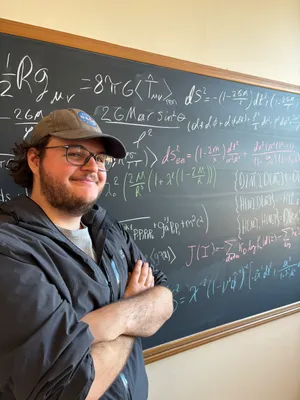Gravity

My first long term research project outside of my NSF REU at UPenn, and a smaller project on the connectivity of cubits in open quantum systems, was concerned with black holes in Emergent Modified Gravity. Working with Martin Bojowald at Penn State, we noticed that in Emergent Modified Gravity, it is possible for black holes to form a boundary in space where the metric signature goes from Lorentzian to Euclidean. In other words, there is a Lorentzian region of space that acts the way we usually expect General Relativity to behave, and a Euclidean counterpart, where the same intuition becomes more complex.
This effect is of high interest in the quantum gravity community since signature change is also predicted by Loop Quantum Gravity (LQG), and the effect we proposed in our paper occurs at a highly macroscopic scale. In some sense, understanding the signature change metric we proposed could be highly useful in providing better insight into the inner workings of LQG.
In a similar vain, we just submitted a different paper concerning the collapse of dust in emergent modified gravity (https://arxiv.org/abs/2412.18054). Specifically, we studied the Lemaitre–Tolman–Bondi model of collapse and the Oppenheimer-Snyder model of collapse, which have been studied in the past in Loop Quantum Gravity as forms of black hole formation. Notably, we determined that in emergent gravity, the singularity formed is physical, and therefore does not match cosmic bounce solutions found in other papers. It was also shown that our holonomy parameter is not consistent with that seen in the model as derived in Loop Quantum Cosmology.
In some sense, our next paper that will accompany our recent work on dust collapse is focused on another method of black hole formation. In this paper we are studying the critical collapse of scalar fields. This is a numerical problem that is dictated by a set of coulpled non-linear differential equations, which dictate how spherically symmetric scalar fields travel inwards and form a horizon. In our case, we needed to rederive the model, similarly to one also studied in Loop Quantum Cosmology, this gives us a model that has holonomy corrections, yet preserves the classical limit.